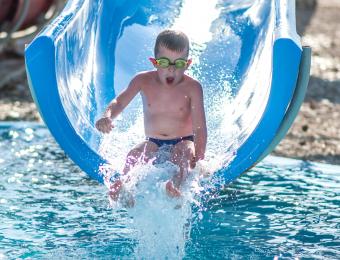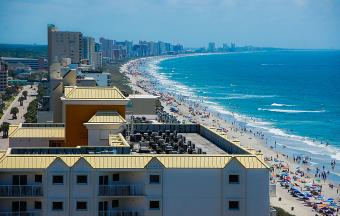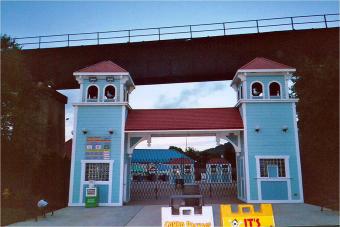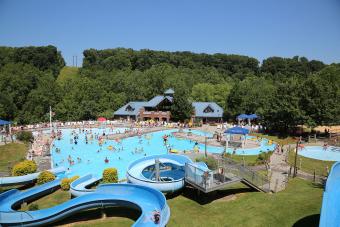
The Disney World Mission: SPACE attraction is an out-of-this-world experience for theme park guests who want to let their imagination take flight, literally.
About Disney World Mission: SPACE
Simply put, Mission: SPACE is an interactive simulator ride that sends riders on an interplanetary adventure to Mars. In reality, however, Mission: SPACE is much more than just a ride. Built for an estimated budget greater than $100 million, the ride opened at Epcot Center in 2003 to stunning success. Everything about the attraction is themed down to the slightest detail, from the entry pavilion and queue line to the painstakingly accurate cinematography compiled from satellite, shuttle, and space station images. This makes Mission: SPACE one of the park's most thoroughly convincing experiences, and riders are swept away in its realism and excitement.
Entry Pavilion
As with all Disney attractions, Mission: SPACE is heavily themed even as riders approach the entrance. The setting for Mission: SPACE is a unique pavilion that pays homage to the history of spaceflight, including a detailed moon replica with landing sights flagged for posterity. Plaques with space-themed quotes from throughout history line the pavilion, bringing the voices of Galileo, Plato, John F. Kennedy and others into the ride. Surreal planetary orbs dwarf the entrance, hinting at the immensity of the experience riders are about to undergo.
At the entrance, riders can choose from two experiences: the Full Throttle or Orange side that includes the complete centrifuge ride, or the Half Throttle or Green side that provides a less intense experience (the Green variation opened in 2006 after prolonged rider complaints about dizziness, nausea, and other motion sickness ailments). As riders wind their way through the queues, they learn the ride's back story and are "trained" in preparation for their slingshot around the Moon voyage to Mars. Effects in the queue area include an authentic lunar rover and a slowly spinning "gravity wheel" complete with living areas and training facilities for upcoming space missions.
The Ride Experience
Most theme park rides simply strap guests into a seat and propel them through the attraction, but on Mission: SPACE the guests actually control different aspects of the experience. There are only four riders per capsule, and each is assigned a critical role: commander, pilot, navigator, or engineer. Throughout the mission, each rider will receive instructions from the capsule communicator (Capcom) and they use their joysticks to complete maneuvers essential to the mission's success. Because of this level of interactivity, each Mission: SPACE ride depends on the riders' cooperation for its final outcome.
Inside the capsule, riders are surrounded by switches, lights, and indicators to enhance the ride's realism. After a launch countdown, the capsule blasts off with startlingly realistic motions, and riders experience forces close to three times the force of gravity. During the nearly five minute ride, the new astronauts dodge rogue meteors and complete a risky landing, as well as face other hazards.
After the simulator and centrifuge experience, the astronaut team is debriefed and led to the end of the ride, where interactive games and the obligatory gift shop await the successful space adventurers.
Mission: SPACE Riding Tips
The Disney World Mission: SPACE attraction is not for everyone. The minimum height requirement is 44 inches, and riders susceptible to heart, back, or neck problems as well inner ear imbalances, motion sickness, and claustrophobia should not ride. The ride is also not recommended for pregnant guests. Because of its amazing realism, Mission: SPACE is the first theme park attraction in the world to offer "space sickness" bags onboard. While many roller coasters speed guests through higher forces and more gut-wrenching twists, it is the sheer longevity of the disorientation aboard Mission: SPACE that can be detrimental to many riders.
Riders who still want to try out their space navigation skills can minimize discomfort in a number of ways, however:
- Wear cool clothing to take advantage of the capsule's air conditioning and stave off nausea
- Consider taking Dramamine or other medication to minimize motion sickness
- Do not ride Mission: SPACE after a meal or if feeling poorly
- While riding, focus on the capsule's monitors to minimize disorientation
- Riders susceptible to motion sickness should opt for the low intensity Green ride experience
Other Space Attractions

Would-be astronauts have their choice of many different space-themed attractions at Disney theme parks as well as other attractions. The Space Mountain roller coaster is a fun ride at Disney World as well as at Disneyland theme park in California, and many amusement parks around the world offer classic rocket rides for simple space excitement. For an educational yet exciting space-oriented theme park getaway, travelers should consider visiting the Kennedy Space Center on Florida's Atlantic coast or the Johnson Space Center in Houston. Young astronauts can even enjoy Space Camp, based in Huntsville, Alabama.
The Disney World Mission: SPACE attraction is a unique interactive centrifuge ride that gives guests one of the most realistic space voyage experiences in the world. Before strapping in, however, riders should thoroughly understand the perils of the ride and how to minimize discomfort on their way to Mars, an experience that will leave them astounded that they are still on Earth.







